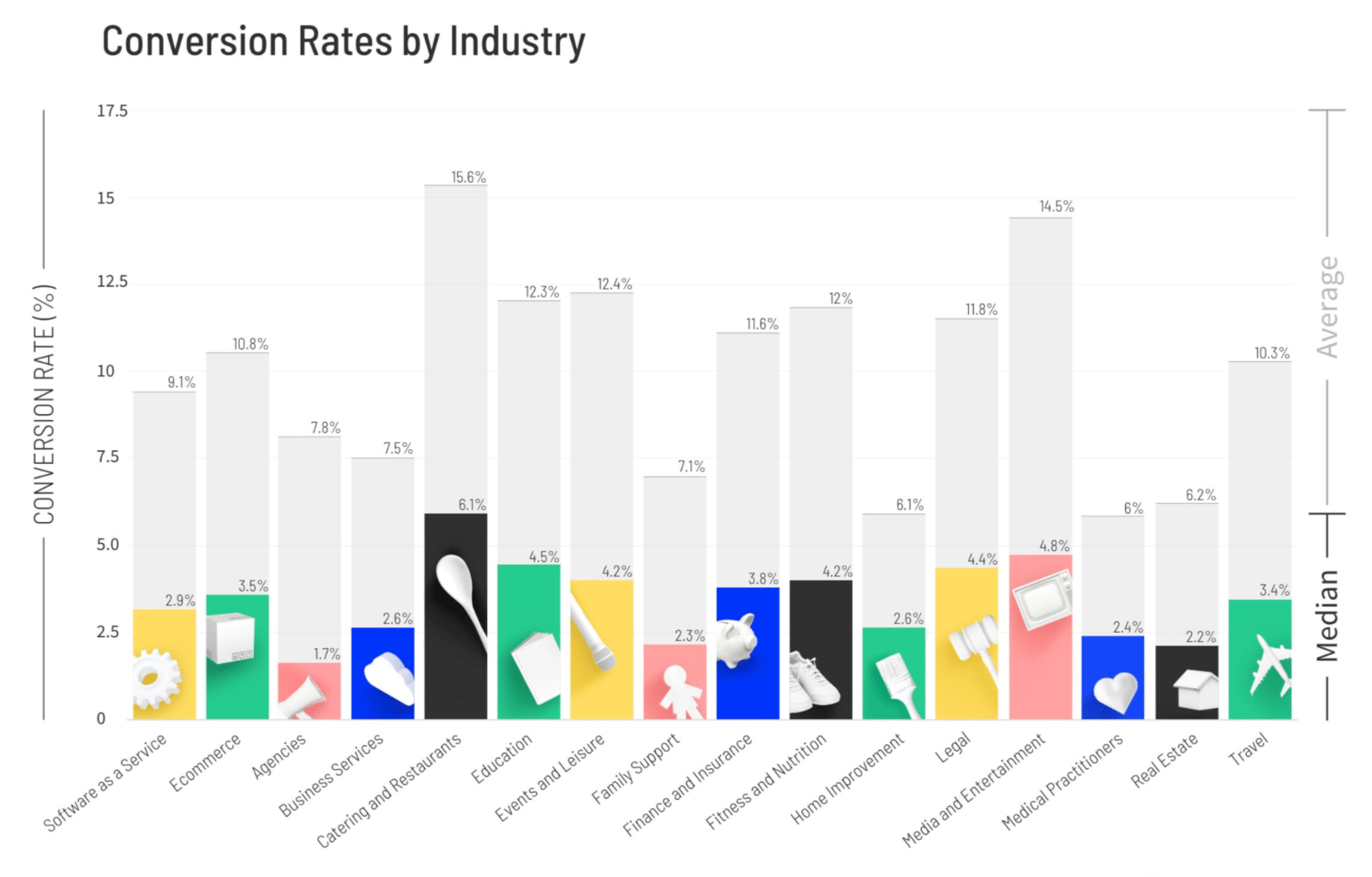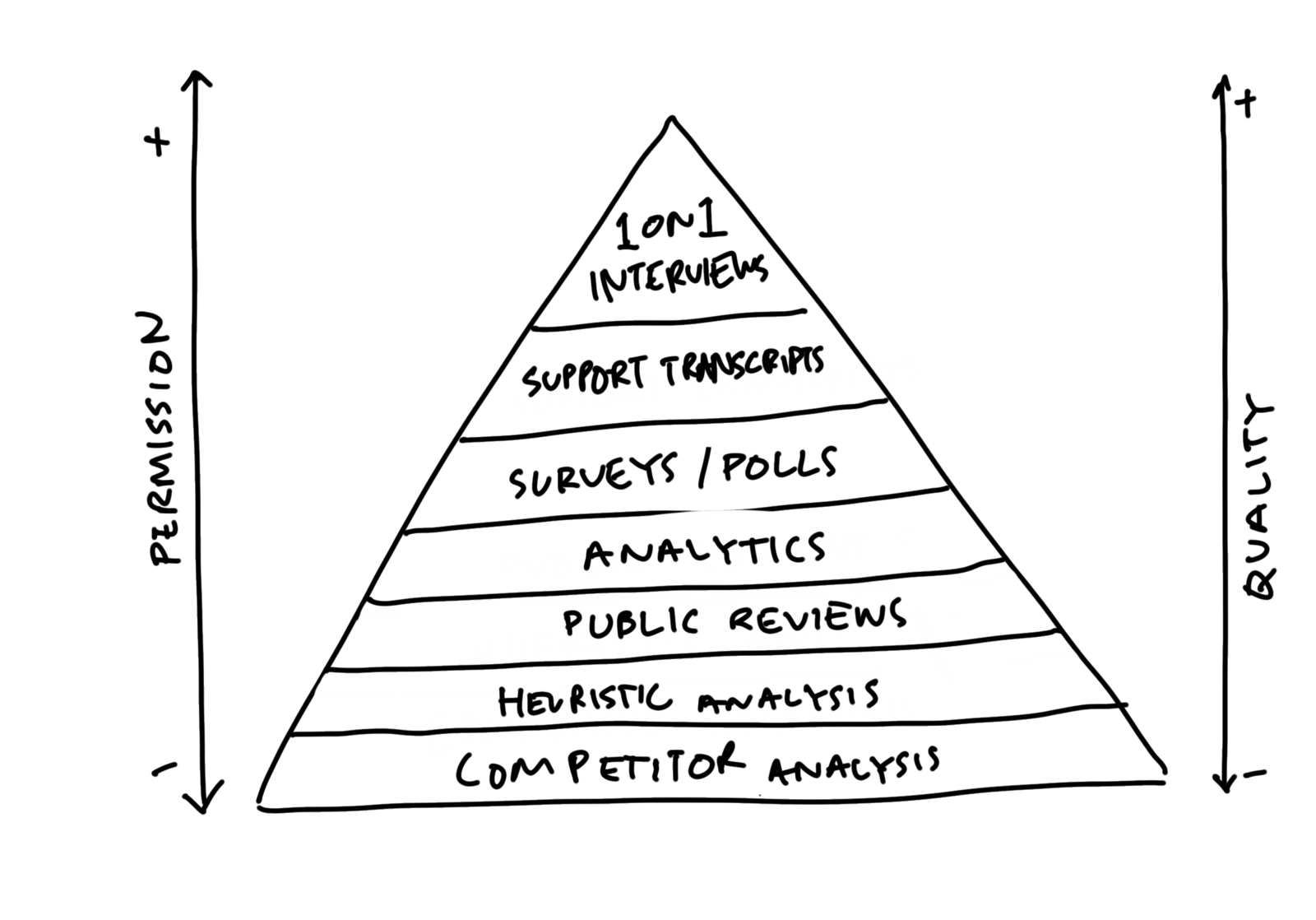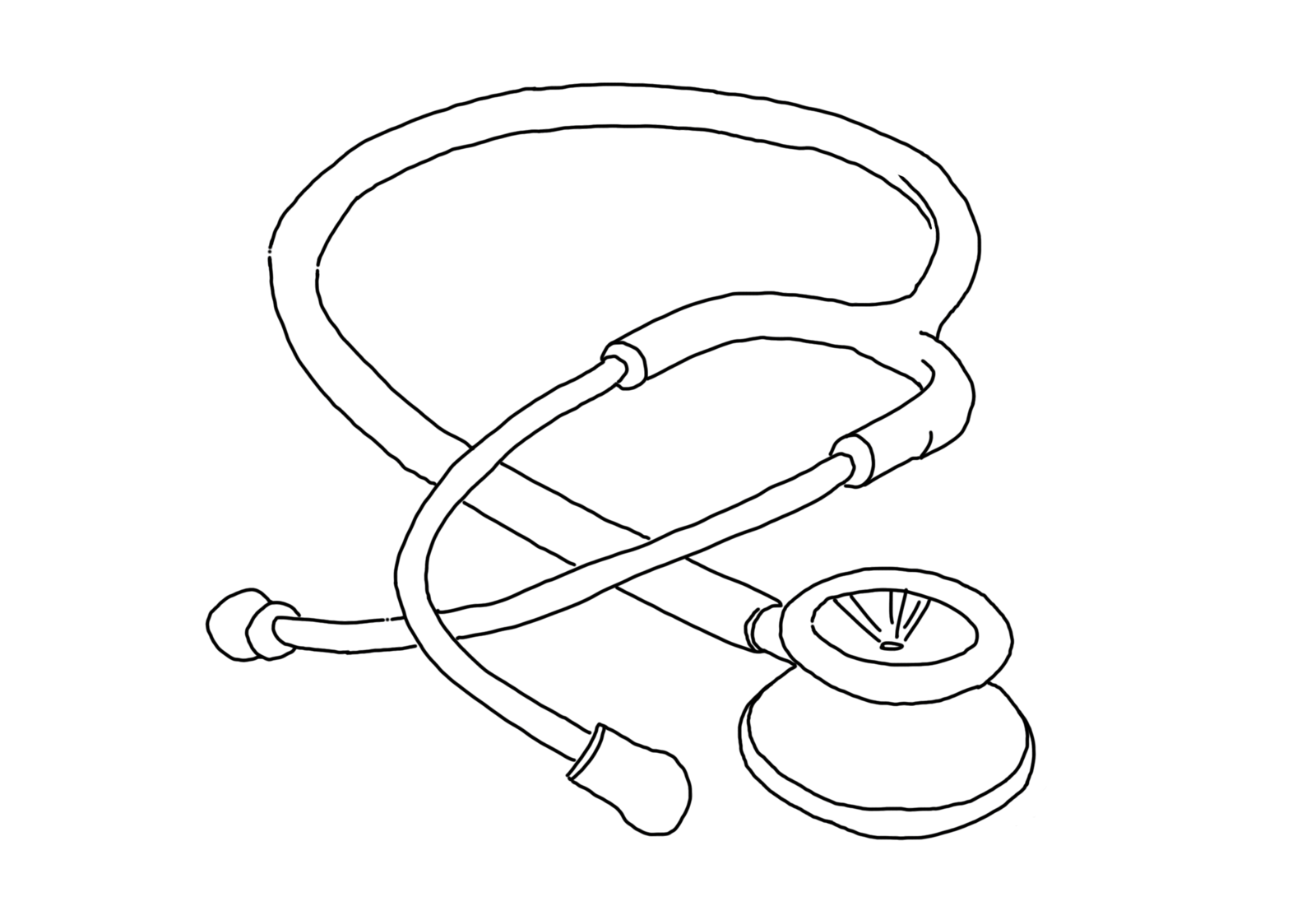
I decided to learn more about conversion rate optimisation because I appreciate objectivity in my work. Designing and building digital products can be a highly subjective process at times. Everyone has an opinion on what needs to be done, no one knows what will work, and it can all get overwhelming at times.
Seven weeks ago I received a scholarship to the CXL institutes’ conversion optimisation mini-degree. It claims to be one of the most thorough conversion rate optimisation training programs in the world. While I am a long way from mastering the subject, I do have a much clearer sense of what the subject is about, when it’s appropriate and how it works. This post outlines everything I have learned about improving your website conversion rate and why that’s important.
WHAT IS A CONVERSION RATE?#
A conversion rate is just a measurement of how many people in a group do something. If 1000 people visit your website and 20 of them sign up to your mailing list then your mailing list conversion rate is 2% (20/1000 X 100).
Optimising conversion means making improvement to your website so that more people sign up next month. These improvements usually mean changes to the messaging, design or functionality of your website and wider sales funnel. That said, conversion rate optimisation (CRO) is not marketing. It covers the sales funnel after traffic arrives on your site. Finding and driving quality traffic to your website is a marketing problem, conversion is what happens when they arrive. There will certainly be areas of overlap (like technical SEO, or making sure ad design and copy is congruent with the landing messaging) but CRO is not marketing, it’s sales.
WHY BOTHER WITH CONVERSION?#
A low conversion rate means you have a leaky bucket. You can pour as much time and money into advertising and marketing as you want, but if none of your visitors signup or buy your product then it’s all a waste of time.
If you’re investing your time and attention into growing your business, or if you plan to spend a lot of money on paid advertising, then CRO will make sure you waste as little of it as possible.
WHO CARES ABOUT THIS STUFF?#
1000 transactions a month. If you have 1000 transactions a month that’s when you need to start caring about conversion rate optimisation.
A transaction doesn’t have to be a commercial transaction. It can be anything you want to optimise. Want to improve your email signups? You should have about a thousand signups a month before you start to invest serious time and attention into improving your conversion rate.
1000 is just a rule of thumb, I will explain how to work out exactly how many transactions you need later in the post. The point is that if have less than 1000 transactions a month then it will take too long to run statistically reliable tests. No one wants to wait 35 weeks to find out if a certain change to your website has any impact. When you have less than 1000 transactions per month your time and attention are better invested in growth.
Conversion rate optimisation time and dedication. It is expensive work, you have to have skilled people working on this full time, and the tooling is not cheap.
As a result companies with high amounts of traffic and lots of transactions per month care about conversion rate optimisation (CRO). They fall into three broad categories:
Ecommerce – Online stores, especially big ones, have a lot to gain from CRO because a tiny improvement can have an immediate and direct impact on their bottom line.
Software – Attentional software products (like social media platforms and entertainment services) and software as a service companies (like digital tools and productivity platforms) care about CRO because their entire sales funnel and product exist online.
Everyone else – This could be business services, educational institutions, finance and insurance, legal services, travel sites. It’s not so much a type of industry as much as the size of the company. Any business that has a website that crosses 1000 transactions a month will benefit from dedicating attention to their conversion rate.
ALTERNATIVES TO OPTIMISATION#
Conversion rate optimization is a margins game. If you make 1 million dollars a year in recurring annual revenue then a 10% improvement in your conversion rate over the year will result in an additional $100K. It will cost you at least $100K to pay for the salaries of the 2 or 3 people who will be working full time on this pursuit.
Now let’s say you are making 10 million dollars a year, the exact same work will result in an additional million dollars. That will pay for the same salaries 10 times over.
If you don’t have the margins, that 100K will be better spent on people that will help your company grow, rather than optimise.
The problem here is that running statistically reliable experiments requires a lot of data. However, experimentation and A/B testing is just one part of conversion rate optimisation. It also encompases:
- customer research
- good design,
- copy-writing,
- experimentation,
- engineering,
- and a keen understanding of analytics.
I’d argue that covering the fundamentals above is just good product development. You are probably doing this stuff already. If you are not, you should be.
If you cannot run experiments, you can still make intelligent, data driven decisions without the reassurance of testing.
SO WHAT KIND OF RESULTS ARE WE TALKING ABOUT?#
A company called Unbounce analysed 34 thousand landing pages across 16 major industries and found that the median conversion rate for all the landing pages was 3.2%.

This image is taken from the 2020 benchmark report. I will link to it in the footer below so you can explore it in more detail and go over their exact methodology and the insight they have for your specific industry.
It is important to point out that a conversion can mean many things: buying, downloading, subscribing, it could mean a new lead, a phone call, an in-person appointment. So the comparison in the image above is not fair. Still, it does provide a practical overview of what a cross section of industries looks like.
Perhaps the main takeaway from this information should be that if you are currently converting at lower than your median then that should be your first goal. Once you are on par with the industry median you can aim for your industry average. But the top-performers do much better, they had a median conversion rate of 25% (based on the top 25th percentile).
A FRAMEWORK FOR IMPROVING CONVERSION#
At its core, conversion rate optimisation is about improving products and services for the people who use them: Understanding what people want so that you can give it to them.
A/B testing is a valuable tool in this process because narrowing on one what people actually want is hard to predict.
A/B testing is exactly what it sounds like: you have two versions of something (A and B) and a metric that defines success. To determine which version converts better, you drive traffic to both versions and then measure which version was more successful.
This twitter summary of the process sums it up but it leaves out a lot of the more complicated details like, how do we figure out what to test? or at what point are we allowed to call one version more successful than another?
Another way to look at the optimisation process is to think of it as a build-measure-learn cycle:
First You Learn#
Once you’ve established a project’s business goals you start by auditing the product’s current conversion rate to establish a baseline.
Then you begin your research. This broadly falls into two categories:
- looking at what people do and
- listening to what they say.
Analytics tools help you look at group behaviours. User testing and screen tracking tools help you look at individual behaviour. Looking at what people do will tell you what people are doing but it won’t tell you why. To understand the why you must speak to people.
Speaking to people could mean direct customer interviews. It can surveys and polls or you customer support transcripts. It can also just mean going through public review and testimonials. However you get there, understanding individual dynamics and motivations helps you understand the why.

The lower rungs of this pyramid don’t necessitate any involvement from other members on your product team nor do they require any permissions from your customers. The higher up you go the better the richer the information gets, but the more permissions and coordination you need.
Based on your insights, you come up with a list of things you can focus to improve conversion. These best-guesses need to be translated into formal hypotheses so that you can rank and test them.
The idea is to be able to focus on the highest priority changes that will lead to the biggest impact in the shortest period of time with the least difficulty.
Then You Build#
Once you’ve honed in on the hypothesis you want to test you have to actually design the changes, write the copy and/or build the feature.
Finally You Measure#
Once the changes are ready to be implemented it’s time to set up the testing infrastructure and run the tests.
Once the tests are complete, circle back to step one, analyse the results and repeat the process.
One of the easiest mistakes to make when you start AB testing product changes is throwing darts. “Let’s change the colour of these buttons” , “Let’s make the headlines bigger”, “What if we just add emojis everywhere”. That’s not to say that these changes won’t have an impact, it’s just that a more systematic approach to testing will let you narrow in on meaningful changes faster, and you won’t waste a tremendous amount of time and manpower flipping switches.
Improving conversion is largely a diagnostic process. You start with questions, you gather data, have an understanding of what’s going on you try and make the best decisions you can with the evidence you have. Then you measure the result and repeat the process over.

DIFFERENT TYPES OF TESTING#
“A/B testing” has become a general term for all types of testing, but it’s really just one a few approaches. It’s good to know what the different types of testing are, so that you know to pick the right one for the context.
A/B Testing#
A/B testing involves comparing two versions of something. If one versions is better that the other from the original the results show you the magnitude of this difference.
There are a few way to run A/B tests
Most A/B testing tools have editors that make a copy of the original page that you can then tweak. You can edit wording, change colours, you can even add, remove or rearrange elements if you want.
Another way to do A/B testing is called split testing. This works best when you want to test two distinct designs. Instead of making lots of changes in the testing editor you can create a whole new page and then split the traffic between the original and the new page.
One more way to run AB tests is to use feature flags. This is a good approach when you want to A/B test functionality. Coding entire features into an AB testing editor is not practical. With a feature flag you could test two different versions of a certain feature and then measure their impact on an outcome.
Multivariate Testing#
Multivariate testing is similar to A/B testing except that you can test lots of different changes at the same time. The set up is combinatorial, so if you want to test two different types of headlines and two different kind of button designs at the same time it will create 4 permutations to test.
The problem with multivariate testing is that it requires an incredible amount of traffic. If you are struggling to do a basic A/B test then multivariate testing is out of the question.
Multivariate testing can useful once you have already found a winner with a basic A/B test. You can follow a winning test with a multivate test that explores all the minor changes that were not important enough to test in isolation.
The Bandit Test#
Bandit testing is similar to A/B testing except that it splits the traffic dynamically. When a variation starts to perform better, the test will drive more traffic to that variation. A bandit test is good when the result is more important than the information.
Let’s say you are selling an ebook and you can either give away a free chapter ( and capture people’s email address to drive a pre-sale campaign) or you can push for pre-orders on the landing page. You could test all three permutations with a bandit test. If capturing email and pushing for pre-orders together turns out to be the most effective strategy then the test will push more and more traffic to that variation.
Existence Testing#
Existence testing is like multivariate testing except that you are removing elements rather than testing variations. If removing an entire element has no impact on the conversion rate then it probably doesn’t need to be there. Existence testing is used to build up an understanding of what the salient features in a system are and what their relative impact is.
So far I have covered what conversion rate optimisation is, why it is important and who it is important for. I have also shared a framework for thinking about the conversion process and the different types of tests there are.
In part 2 I will look at how to calculate your conversion rate and implement tests, how long you need to run tests for, some ideas to test to get you started.
Links#
- Here is the Unbounce 20202 Benchmark report I mentioned https://unbounce.com/conversion-benchmark-report/
- If you’d like to read more posts about conversion optimisation you can follow me on twitter @joshpitzalis.
- This is post 7 in a series. The rest of the posts are listed here.
- This is the CXL Institute’s conversion rate optimisation program I am currently doiner rungs